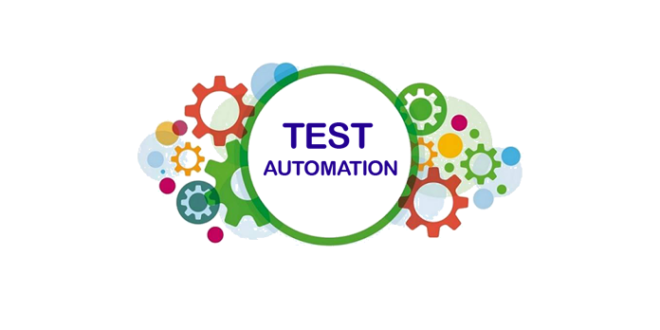Guaranteeing Success in Automation Testing: Key Metrics, Challenges, and Solutions Every QA Group Must Know
In the realm of software application top quality guarantee, the landscape of automation testing is ever-evolving, demanding a meticulous approach to make certain smooth operations. The trip to understanding automation testing is led with nuances that need an eager eye for monitoring, analysis, and constant improvement. As the sector propels onward, the mission for optimal performance in automation screening stays a constant quest, prompting QA teams to outfit themselves with the understanding and approaches essential for triumph.
Value of Key Metrics
Understanding the value of essential metrics is vital for examining the efficiency and performance of automation testing procedures. Key metrics function as quantifiable actions that supply valuable insights right into various facets of the testing process, such as test coverage, test implementation time, issue density, and examination case effectiveness. By analyzing these metrics, QA groups can recognize bottlenecks, ineffectiveness, and areas for enhancement within their automation screening structure.
One critical facet of key metrics is their ability to track progress and keep an eye on the overall health of the screening procedure (automation testing). They allow stakeholders to make educated decisions based on data-driven understandings, which can bring about extra efficient screening techniques and far better source allocation. Furthermore, key metrics can aid teams established practical objectives, measure the success of automation efforts, and demonstrate the ROI of automation screening efforts

Common Obstacles Faced
Challenges generally experienced in automation screening procedures can considerably influence the general effectiveness and performance of QA groups. Among the significant obstacles is the option of the best test situations for automation. Not all examination cases are suitable for automation, and choosing the wrong ones can lead to lost time and sources. In addition, maintaining test scripts can be a complicated task, particularly as the application undertakes regular changes. Test manuscript upkeep requires continuous updates and adjustments to guarantee they show the current capability accurately. One more common challenge is the first financial investment required for setting up automation structures and devices. This can be a barrier for some organizations, particularly smaller sized ones with minimal spending plans. Moreover, automation screening might not cover all aspects of testing, such as functionality and individual experience screening, which still require hand-operated treatment. Overcoming these obstacles calls for correct planning, strategic test case option, robust maintenance processes, sufficient sources, and a clear understanding of the constraints of automation screening.
Reliable Solutions for Difficulties
To attend to the obstacles run into in automation screening, implementing effective options is necessary for boosting the performance and productivity of QA groups. One key remedy is to buy durable training programs for QA teams to ensure they have the needed abilities to efficiently use automation devices. Training can connect understanding gaps, enhance understanding of automation structures, go to this web-site and boost scripting abilities, ultimately resulting in more effective test creation and execution.
Another important option is to develop clear communication networks within the QA team and with other stakeholders, such as programmers and task supervisors. Effective communication aids in straightening expectations, sharing progress updates, and promptly addressing issues or obstacles that may arise throughout the automation screening process.

Tracking and Evaluation Strategies
Implementing effective surveillance and analysis techniques is important for making certain the success and effectiveness of automation screening processes. Furthermore, evaluating test results and metrics gives important insights into the quality of my company the software application being evaluated and the effectiveness of the screening method.
One key method in tracking and evaluation is using dashboards that settle pertinent metrics and KPIs in a visually obtainable format. These control panels use a thorough overview of test execution standing, test insurance coverage, problem patterns, and other crucial details. Regularly reviewing and assessing these dashboards can assist QA teams make notified decisions, prioritize tasks, and enhance testing efforts.
Moreover, carrying out automated informs and notices based on predefined limits can improve positive monitoring and timely intervention. By establishing informs for performance inconsistencies or examination failures, teams can address concerns immediately and avoid them from intensifying. Overall, tracking and analysis strategies play a vital duty in making certain the performance and success of automation testing initiatives.
Constant Renovation Strategies
Enhancing the efficiency of automation testing processes necessitates the consistent refinement of methods and techniques. Continuous enhancement techniques are critical for QA groups to adapt to advancing technologies Read More Here and supply top quality software program products. One essential approach to enhancing automation testing procedures is to carry out routine reviews and retrospectives. By assessing past testing cycles, groups can identify bottlenecks, inefficiencies, and areas for improvement. Executing responses loopholes and incorporating lessons discovered right into future screening structures can generate substantial enhancements gradually.

Verdict
To conclude, it is essential for QA teams to recognize the vital metrics, obstacles, and solutions in automation testing to guarantee success. By meticulously keeping track of and analyzing information, applying reliable solutions to usual difficulties, and constantly boosting techniques, QA groups can maximize their testing procedures and deliver top notch software application products. Following these techniques will ultimately lead to a lot more effective and efficient automation testing methods.
By evaluating these metrics, QA groups can recognize bottlenecks, inefficiencies, and locations for renovation within their automation testing framework.
In addition, vital metrics can help groups established sensible goals, gauge the success of automation efforts, and demonstrate the ROI of automation testing efforts.
Difficulties frequently run into in automation screening procedures can considerably influence the total effectiveness and performance of QA teams. Automation testing might not cover all elements of screening, such as use and individual experience testing, which still need manual treatment.In conclusion, it is critical for QA groups to understand the vital metrics, challenges, and services in automation screening to make sure success.